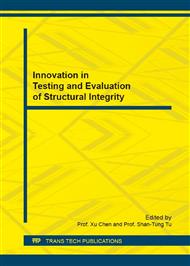p.493
p.498
p.503
p.508
p.514
p.519
p.524
p.529
p.534
Finite Element Analysis and Research on Corrosion Defect of Tank Floor
Abstract:
Storage tank is an essential vessel in petrochemical industry, and the corrosion of tank is an important reason for the safety hazard. The corrosion of tank bottom plate is more serious than the tank wall, and it is not easy to check and repair, when damaged to a certain extent it will cause the leakage of the media, then lead to waste of energy, environmental pollution, at the same time it will cause a major accident. Magnetic flux leakage testing is widely used in the field of tank floor inspection with the advantages of fast scanning speed, accurate results and so on. In this paper, the finite element simulation and analysis of the corrosion defect leakage magnetic field is used to obtain the data, and the characteristic of the leakage magnetic field is extracted. The effect of defect depth and width and shape on the magnetic flux leakage field is studied, and the distribution curve of the magnetic flux leakage field is obtained.
Info:
Periodical:
Pages:
514-518
Citation:
Online since:
September 2016
Authors:
Price:
Сopyright:
© 2017 Trans Tech Publications Ltd. All Rights Reserved
Share:
Citation:


